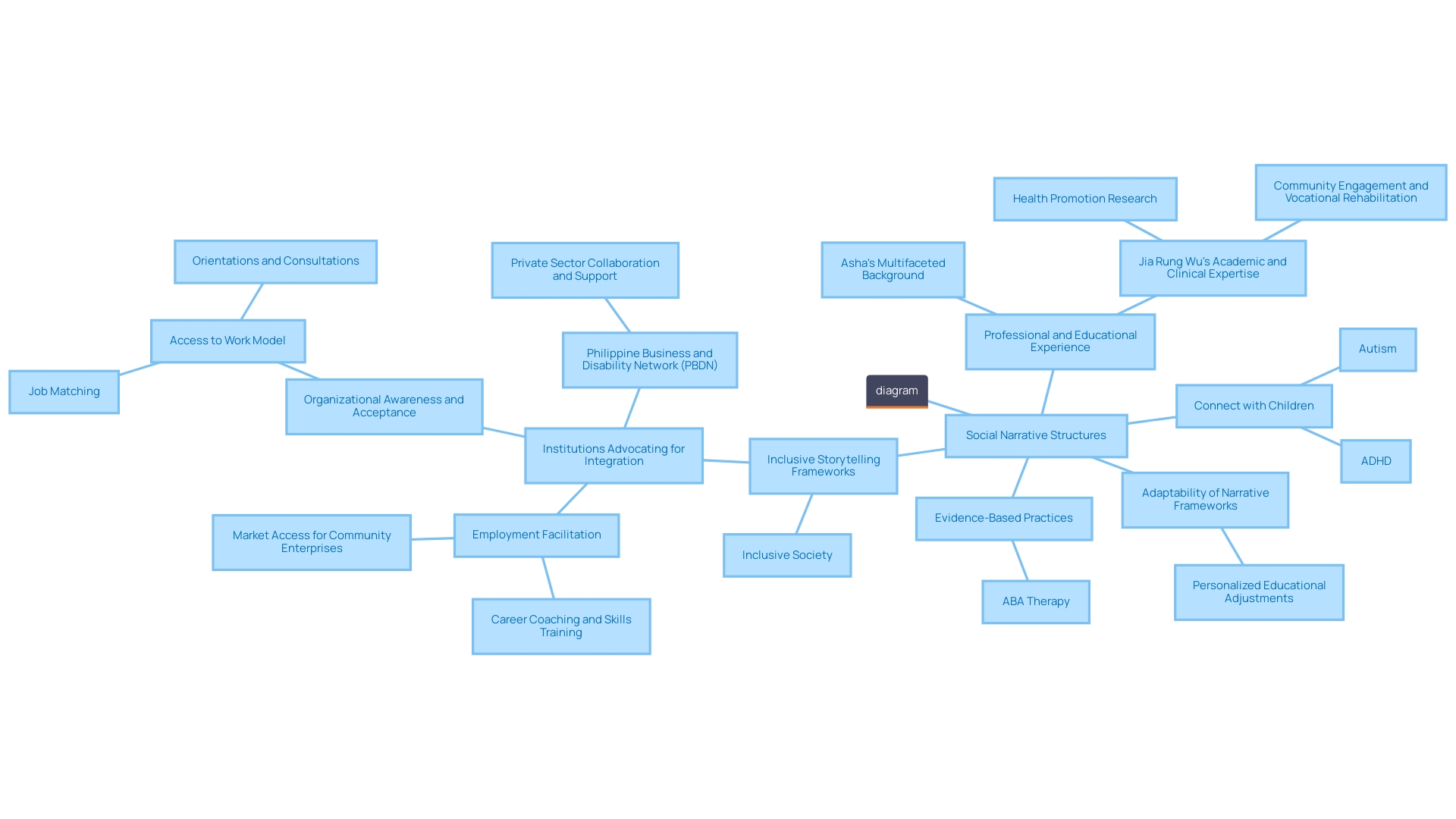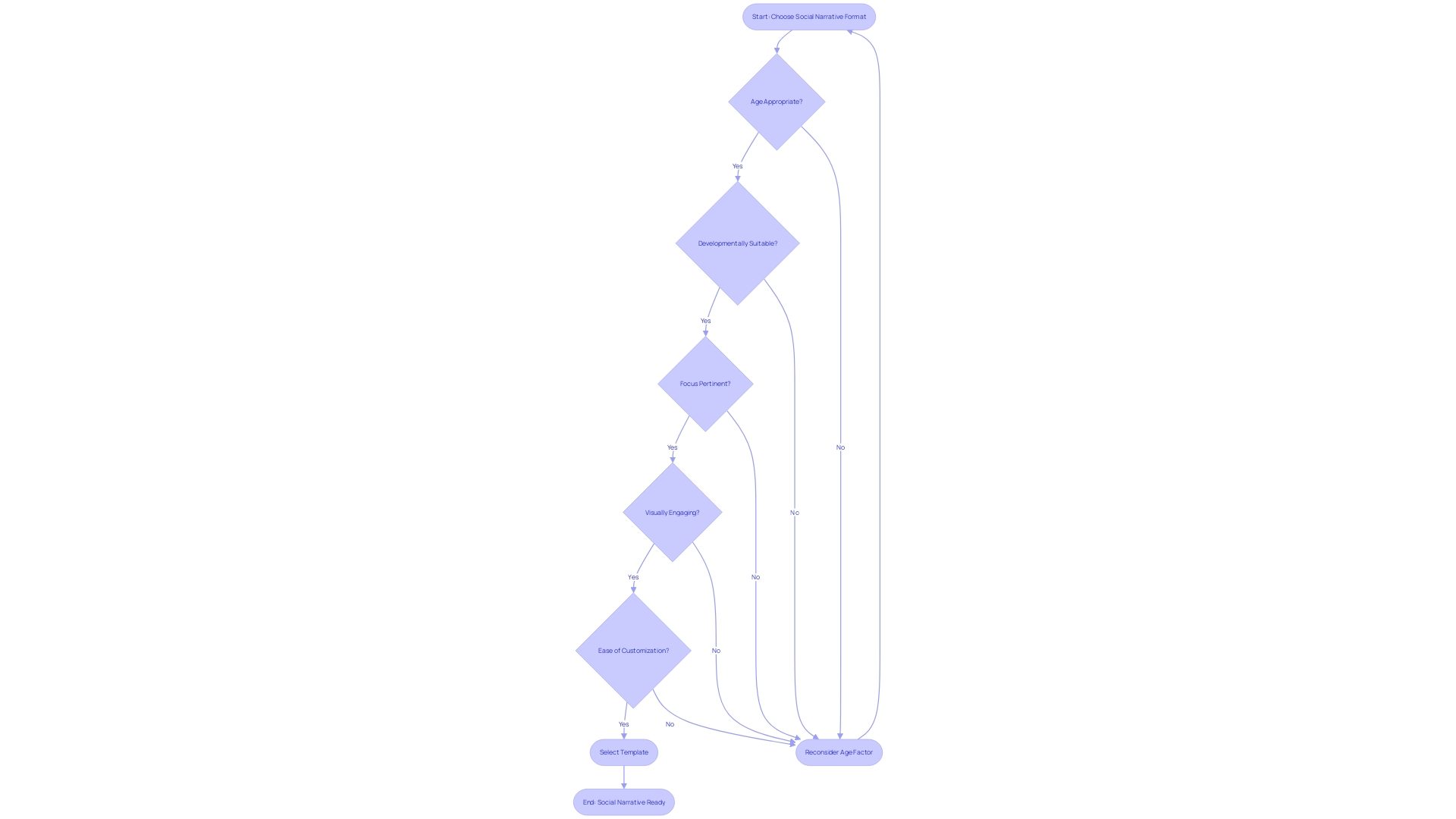Introduction
Harnessing the power of social story templates can have a profound impact on children, especially those with autism and ADHD. These templates provide a consistent structure that simplifies the creation process, making stories accessible and relatable to young minds. They act as a scaffold, saving time and allowing for customization to address individual needs.
With the underpinning of evidence-based practices like Applied Behavior Analysis therapy, social story templates become strategic narratives that positively influence behavior and foster social understanding. By embracing their flexibility, caregivers can create personalized stories that honor each child's unique qualities. These personalized tools are crucial for nurturing children's development and promoting inclusive participation in various life domains.
In this article, we will explore the benefits of using social story templates, how to choose the right template, steps to create a personalized social story, and key elements of effective social stories. Let's embark on this journey of empowerment and support for Parent Advocates as they navigate the challenges of ensuring the well-being of their children.
Benefits of Using Social Story Templates
Utilizing the potential of social narrative structures provides a diverse method for creating narratives that connect with children, especially those with autism and ADHD. By offering a consistent framework, these patterns streamline the development process, guaranteeing that each narrative is approachable and relatable to young minds. They serve as a framework, enabling narratives to be constructed effortlessly, conserving valuable time that can subsequently be allocated to refining tales to meet individual requirements.
The foundation of evidence-based practices, especially from the field of Applied Behavior Analysis (ABA) therapy, contributes to the credibility and effectiveness. These models aren't just about creating stories; they are about crafting strategic narratives that can influence behavior positively and foster better social understanding.
Furthermore, these patterns are not inflexible; they embrace adaptability, allowing modifications and personalizations that respect the distinct characteristics and preferences of every individual. This adaptability is crucial, as highlighted by the increasing need for personalized educational adjustments in classrooms, like those observed by Amy Harland, reflecting the diverse learning requirements of students with disabilities.
The significance of such personalized tools is highlighted by the words of Dr. David (Dan) R. Offord, who emphasized a fair 'race' for all individuals, including those with disabilities. Social narratives are crucial in providing caregivers with the tools to foster their children's growth and promote inclusive engagement in different areas of life, thereby contributing to a fairer society.
Moreover, embracing the inclusivity that narrative frameworks offer coincides with the endeavors of institutions such as Deaf West Theatre and Respectability, which seek to transform societal attitudes and advocate for the integration of individuals with disabilities. As narrative continues to be a powerful means of conveying messages and impacting our society, the employment of inclusive storytelling frameworks becomes an invaluable resource in the pursuit of fostering a more welcoming environment for neurodivergent individuals.

Choosing the Right Social Story Template
Choosing a social narrative format customized to the individual requirements of a young person is a crucial phase in promoting their social growth, particularly for youngsters with autism or ADHD. When choosing a template, consider the following:
-
Age and Developmental Suitability: Opt for templates that resonate with the child's age group and developmental stage. Using captivating language and visuals that resonate with young readers can greatly amplify the influence of the narrative.
-
Focused Pertinence: Guarantee that the model is directly associated with the youngster's particular difficulties or social situations they encounter. The narrative should serve as a beneficial tool in their everyday life, transforming it into more than just a tale, but a practical guide.
-
Visual Engagement: Children are often captivated by visuals. Choose designs with attractive illustrations that captivate young readers and assist in keeping their attention on the story.
-
Ease of Customization: Flexibility is key. A template that allows for adjustments, such as modifying the text or altering images, will enable you to create a more individualized narrative that mirrors the individual's distinct experiences and requirements.
By integrating these considerations, parents and educators can develop impactful narratives that not only educate but also embrace the variety of human experiences, as highlighted by the compelling use of visuals in comic books for children with autism. This approach aligns with recent findings from Dr. Liji Thomas, who underscores the importance of personalized interventions in supporting youth with diverse needs. Moreover, embracing the diversity of neurological conditions and guaranteeing that therapeutic objectives have significance for the individual and their family, as proposed in recent studies, will augment the importance and effectiveness of narratives for individuals with developmental obstacles.

Steps to Create a Personalized Social Story
To develop a bespoke social story that resonates with a child's experiences, follow this structured approach:
-
Identify the exact behavior or context the narrative aims to tackle. This could be anything from social interactions to daily routines.
-
Collect detailed information about the behavior, considering what prompts it, the results it leads to, and any successful strategies previously used.
-
Lay the groundwork for your story by crafting an outline or storyboard, pinpointing crucial elements and the sequence they will unfold in.
-
Use the template to create the narrative, focusing on language that is clear and easy to understand.
-
Incorporate visual elements, such as illustrations or photos, that can engage the young one's focus and assist with understanding.
-
Thoroughly assess the narrative, refining it for clearness, accuracy, and appropriateness, to guarantee it fulfills the requirements of the young individual proficiently.
-
Consistently apply the narrative and reinforce its key messages through repetition and affirming feedback.
By employing these measures, caregivers and experts can develop personalized narratives that purposefully address the preferred conduct and promote a youngster's development.
Key Elements of Effective Social Stories
Developing narratives that connect and have a beneficial effect on the behavior and skill growth of young individuals encompasses beyond mere text. It requires a combination of simple language, organized narrative, and personal details that resonate with the young one's encounters. Here's how to construct a social story that stands out:
-
Clear and Simple Language: The use of straightforward and accessible language is vital. It should be customized to the youngster's understanding level, making sure they comprehend the intent of the narrative without any perplexity.
-
Positive Tone: Focus on the behavior or skill you aim to encourage, using a supportive tone throughout the narrative. This positivity helps reinforce the desired outcome rather than highlighting what to avoid.
-
Structured Format: Organize your narrative with a distinct beginning, middle, and end. This framework helps the young one comprehend the order of occurrences and the logical advancement of the narrative.
-
Relevance and Personalization: Customize the narrative to the child's unique circumstances and life experiences. This personal touch enhances their engagement in the narrative and its message.
-
Visual Supports: Enhance the narrative with images or symbols that support the text. Visual aids can enhance comprehension and make the narrative more captivating.
Including these components will assist you in creating social narratives that not only teach but also motivate favorable actions and aid individuals in navigating social intricacies. Utilizing various examples and ensuring narratives mirror a child's identity and experiences can make them more relatable and inspiring. Moreover, taking into account the extensive variation in state and local educational infrastructures, these accounts can function as a crucial tool where comprehensive curriculum materials are lacking. Recent studies and initiatives emphasize the importance of such tailored educational tools. For instance, research underscores the necessity for culturally aware practices in autism education, highlighting the disparities and exclusion faced by minority ethnic communities. Additionally, findings from a study on the accuracy of ADHD diagnostic tools like the QbTest indicate that a full clinical assessment is required for proper diagnosis, pointing to the need for multifaceted approaches in addressing learning and developmental disorders.
Considering these observations, the development of narrative accounts must be an intentional and reflective procedure that corresponds to the achievement of implementation results like acceptability, adoption, appropriateness, feasibility, fidelity, cost, penetration, and sustainability. By doing so, we can ensure these stories are an effective component of a broader strategy to enhance the emotional competencies of children, especially those with autism and ADHD. The success of such interventions, as backed by the Fundação Calouste Gulbenkian's initiative in Portugal, further demonstrates the transformative power of well-implemented, evidence-based social and emotional learning programs.
Conclusion
In conclusion, social story templates provide a powerful tool for Parent Advocates to support their children's well-being. These templates simplify the creation process and allow for customization, making stories accessible and relatable to young minds. By embracing their flexibility, caregivers can create personalized stories that honor each child's unique qualities.
Choosing the right social story template is crucial. Consider factors such as age appropriateness, targeted relevance, visual engagement, and ease of customization. By incorporating these considerations, parents and educators can create effective social stories that teach and celebrate the diversity of human experiences.
To create a personalized social story, follow a structured approach that includes pinpointing the specific behavior or context, collecting detailed information, crafting an outline, writing the narrative, integrating visuals, evaluating the story, and applying it consistently.
Key elements of effective social stories include clear language, a positive tone, a structured format, relevance, and visual supports. By incorporating these elements, caregivers can create stories that resonate with children, inspire positive behaviors, and help them navigate social complexities.
In conclusion, social story templates empower Parent Advocates to support their children's development. By utilizing these templates and following the recommended steps, caregivers can create personalized stories that positively influence behavior and foster social understanding. Together, we can create a more inclusive world for neurodivergent individuals and ensure that every child has the opportunity to thrive.
Start creating personalized social stories for your child's development today!




